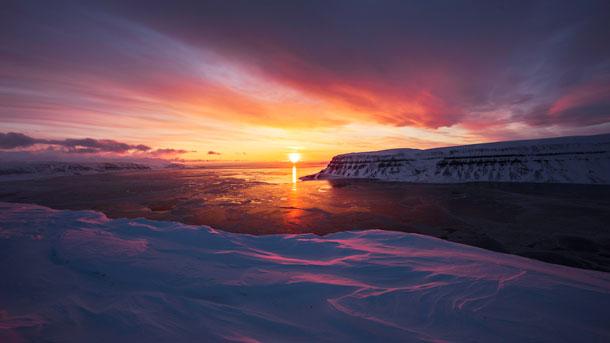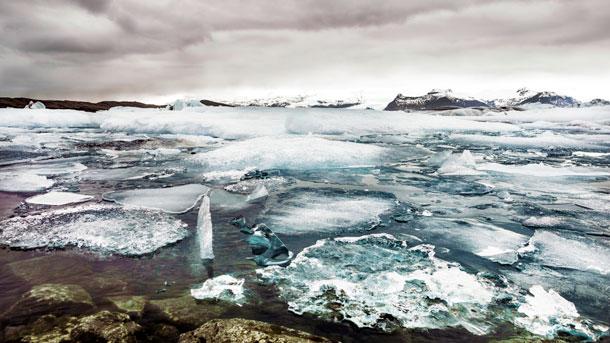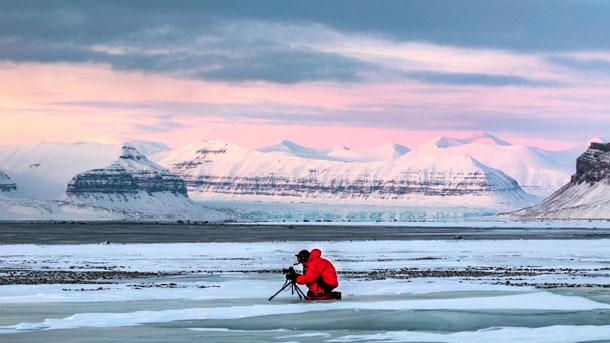HBO’s ‘Ice on Fire’ focuses on solutions to the grave dangers posed by climate change
“Ice on Fire” took two years to make and features scenes taken from around the globe.
A new HBO documentary, “Ice on Fire,” produced and narrated by Leonardo DiCaprio, issues a dire warning about the consequences of climate disruption, but also seeks to inspire people to follow proven, safe, sustainable pathways available right now that can reverse the process.
“Over the last 250 years, we have, in effect, conducted the largest science experiment in history,” DiCaprio says in the opening minutes of the film. “The melting of the world’s snow and ice has now triggered multiple climate tipping points, threatening the very existence of life on Earth. Yet this disturbing future need not be set in stone. But the clock is ticking. Scientists say we must implement these solutions immediately.”
Related: If Thwaites Glacier collapses, it would change global coastlines forever
Director Leila Conners and Leonardo DiCaprio have collaborated before, on the 2007 film “The 11th Hour,” which also focused on global climate issues. She and her team made the new film because “things have not improved,” Conners says.
“We were very, very concerned — Leonardo, specifically, was concerned — about methane and what was happening in the Arctic — [that is], the spike in methane readings in the atmosphere,” she explains. “So, he wanted us to investigate that and let people know about it because it’s a tipping point that we don’t want to cross. Alongside that, there’s also innovation coming online, as well as more knowledge about how nature works. We just felt that there were a lot of new things that were occurring that we did not see in the general press, so we decided to make the film.”
Conners also wanted to show viewers the world from “a human level.” Many climate documentaries show the Earth’s problems from distant vantage points, like satellites, she says. For this film, Conners and her team purposely flew a drone equipped with a camera at the height of a human being. “We felt that if we did that and if we talked to people that work every day on this, the film would have more connectivity. And we’re actually finding that that’s actually the case. It is connecting,” Conners says.
Related: How will the Pacific Northwest change when its glaciers are gone?
In fact, the opening scene of the film shows a solitary woman in a snowcat climbing a mountain to 11,000 feet above sea level in a blizzard in order to capture a new sample of atmospheric carbon levels. “We have to come up here every Tuesday to collect the sample,” the woman tells the filmmakers.
“We find that this is how we’ve known about the carbon in the atmosphere for the last 50 years,” Conners explains. “NOAA, the National Oceanic and Atmospheric Administration, has been conducting these sample tests for 50 years in the same locations every week. They do it in 60 places around the world. For example, in Mongolia, there’s a woman that takes these canisters, takes a train ride for 10 hours, and goes up a mountain to take the sample and come back. These are dedicated people, everyday people, with science backgrounds that help take the samples, and they’re all sent back to NOAA in Boulder, Colorado, for measurement.”
Conners wanted to start the movie this way in order to say to the audience, “This is a person that you and I can recognize. A hardworking person. And these are not liars. These are people who are gathering the data, gathering the evidence so that when we say carbon is in the atmosphere, this is not a debate. It’s like taking your temperature.”
Conners and her team chose to focus on the specifics of the carbon problem in order to illustrate that solutions exist to address it. Humanity has disrupted the Earth’s carbon cycle with fossil fuels and, as MIT scientist Daniel Rothman says in the film, when carbon levels in the atmosphere spike dramatically, the web of life collapses. Scientists who studied the past five mass extinctions note the same signature of a high spike in carbon.
“I think when you diagnose a problem more completely, people can naturally step into the solution on their own,” Conners says. “They don’t need to be told what to do; they can see it.”

Carbon-capture technology features prominently in the film. In Iceland, for example, carbon-sequestering machines turn carbon from the atmosphere into basalt rock, so the carbon can never again escape. In some cases, the excess carbon can be used as fuel.
“Interestingly, direct air capture basically disrupts the fossil fuel industry,” Conners says. “Right now, the fossil fuel industry is going around the world digging up stuff, fracking and drilling, and that’s just old news now. [But] we have this little machine that can pull [carbon] out of the sky. Obviously, that is not reversing the load in the atmosphere, but at least it’s not adding to it.”
The overriding goal is to limit Earth’s temperature increase to 1.5 degrees Celsius. Since the late 1800s, the Earth’s temperature has risen just over one degree, the result of having increased atmospheric carbon levels to 400 parts per million. On its current trajectory, the Earth is headed to 600 parts per million.
“That melts all the ice in the world,” Conners warns. “That’s happened in the past, in other ages. There have been times when there has been no ice on the planet, but humans didn’t live then.”

Conners says the sound of the dripping of the glacier in Iceland was the most haunting thing she experienced while making the film.
“I still hear it in my mind,” she says. “When you’re standing next to a glacier that’s melting like that, it’s the sound of millions of tiny drops. It’s not crash and bang and whoosh. I’m sure it is that way in some places. But, on a day-to-day basis, if you’re standing next to a melting glacier, it’s just millions of tiny little drops that are adding up to a little river that adds up to a wider river. That’s the sound of the end of that glacier. And that, to me, is horrifying.”
Related: UN compact recognizes climate change as driver of migration for first time
On the other hand, Conners felt inspired by the earnestness with which so many scientists and those affected by climate change go about their work.
“I think that’s the hope that everyone’s searching for,” she says. “If you want hope, just go talk to the people that are dealing with this problem, because they’re actively taking this on every day. It gives you a sense of purpose and purchase on this. To me, that is very, very heartwarming and inspiring.”
Conners says she remains hopeful because humanity already has the solutions at hand.
“It’s not a problem that we don’t know the answer for. We have the answer. We just have to do it,” she says. “That’s why the denial industry in the United States is so lethal — because it’s slowing us down. We have to move on from fossil fuels and really mobilize to pull carbon out of the sky and stop putting carbon up into the sky. I think we can because we have the solutions.”
Viewers can watch the documentary for free here.
This article is based on an interview that aired on PRI’s Living on Earth with Steve Curwood.
